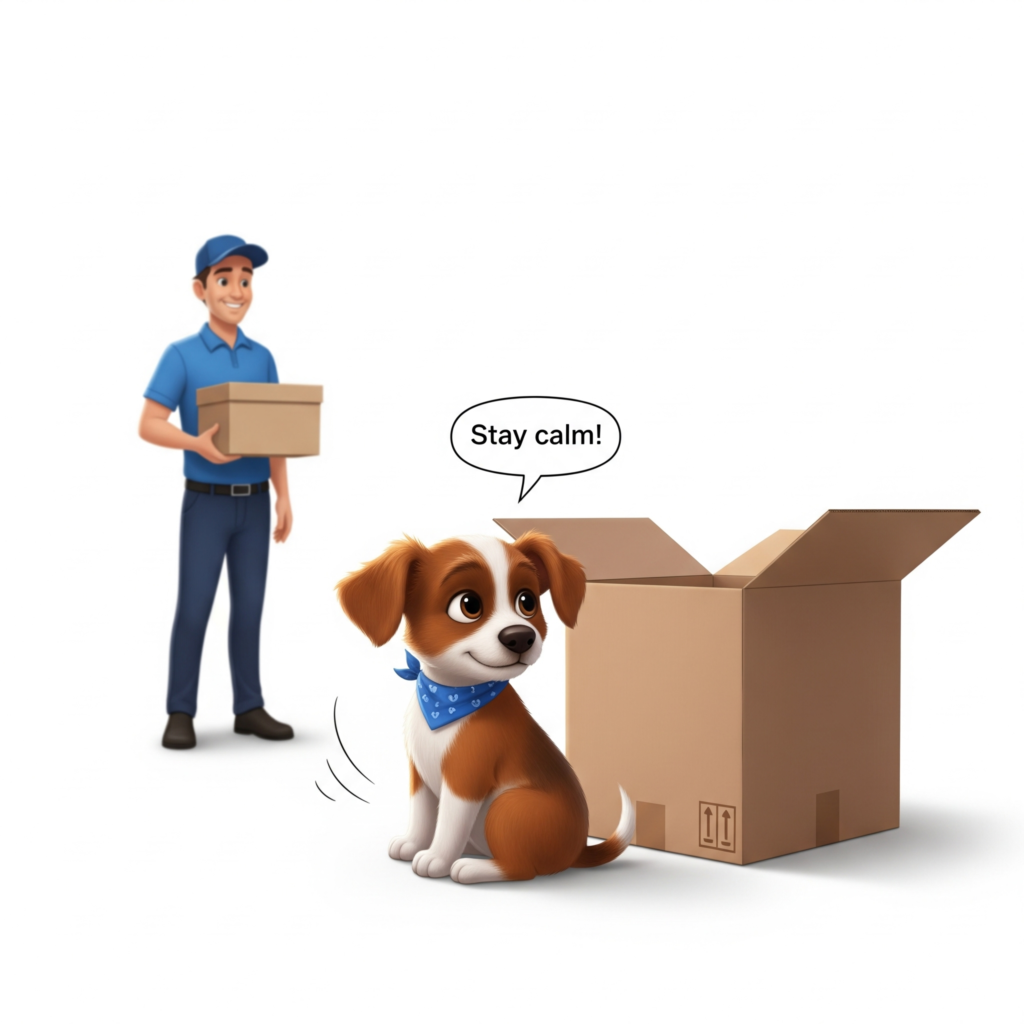
With the rise of online shopping and food delivery, it’s common for the doorbell to ring several times a week—or even daily. While this may seem routine to us, for puppies, it can be a surprising and even stressful event. The sound of the doorbell, unfamiliar voices, or sudden movement near the entryway can trigger barking, jumping, or anxious behavior.
Training your puppy to stay calm during delivery visits isn’t just about good manners—it also creates a safer, more peaceful home environment for everyone.
Start with Sound Desensitization
If your puppy reacts strongly to the doorbell, begin by desensitizing them to the sound. Record the sound of your doorbell and play it at a low volume while engaging your puppy in a calm activity like chewing a toy or sitting for a treat. Over time, gradually increase the volume as your puppy shows less interest in reacting. This helps them learn the doorbell doesn’t always signal excitement or danger.
Create a ‘Go To Spot’ Near the Entry
Designate a spot where your puppy can wait quietly when someone comes to the door. This could be a mat, bed, or crate placed a few feet away from the entry. Train your puppy to go to this spot using cues like “place” or “mat” and reward them for staying there as you open the door. Start with short periods and gradually build up the time and distance.
Practice Calm Door Interactions
Use controlled practice sessions to simulate delivery scenarios. Have a family member or friend ring the doorbell while you guide your puppy to their spot. Praise and reward calm behavior and gradually introduce mild distractions like opening the door or talking with the “visitor.” These exercises help prepare your puppy for real delivery visits.
Use a Leash During the Learning Phase
When you’re expecting a delivery, keep your puppy on a leash or behind a baby gate to prevent them from rushing the door. This gives you better control and helps reinforce the calm behaviors you’ve practiced. Over time, as your puppy becomes more comfortable and responsive, you can reduce the level of management.
Ignore the Barking, Reward the Calm
If your puppy barks when the doorbell rings or when the door opens, avoid scolding or reacting in a way that gives the barking attention. Instead, reward moments of quiet or calm behavior. Timing is important—offer treats or praise when your puppy pauses or stays quiet after a stimulus.
Give Them Something to Do
Keep a special chew toy or puzzle feeder available for times when deliveries are expected. Redirecting your puppy’s focus toward an engaging task can prevent unwanted behaviors and help them associate delivery times with something positive and relaxing.
Stay Calm and Consistent
Your puppy takes cues from your behavior. If you remain calm, speak softly, and act predictably during delivery visits, your puppy is more likely to follow your lead. Consistency in your training approach is key—practice these behaviors regularly, not just when a real delivery is on the way.
Why It Matters
Helping your puppy stay calm during delivery visits creates a more stress-free environment for both of you. It also prevents unwanted behaviors from becoming habits and builds trust between you and your puppy. Over time, your puppy will learn that not every knock at the door is a cause for excitement.
Training for real-life scenarios like this is an important part of raising a well-adjusted, confident dog—and PetsDogPuppy is here to help you every step of the way.
